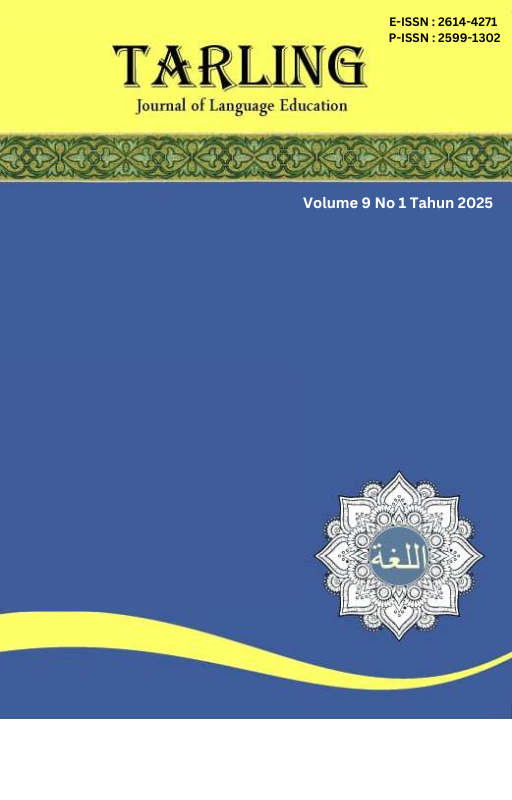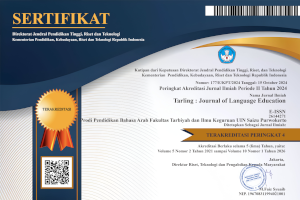Tathwiiru Wasaa`Ithi Lu'batid Domiino Litarqiyatil Mufradaatil Lughah Al-'Arabiyyah Wa Mahaaratil Kalaam Fi Al-Madrasah Ad-Diniyyah At-Ta'limiyyah Zainul Hasan Genggong.
DOI:
https://doi.org/10.24090/tarling.v9i1.13248Keywords:
Instructional Media, Domino Card Game, Maharah KalamAbstract
This study aims to develop instructional media in the form of a domino card game to enhance vocabulary mastery and speaking skills on the topic of al-hayawan for second-grade students at Madrasah Diniyah Ta’limiyah Zainul Hasan Genggong. The research method used is Research and Development (R&D) with the ADDIE model, which consists of five stages: Analysis, Design, Development, Implementation, and Evaluation. The developed media was validated by material and media experts, resulting in an average score of 97.7% for content feasibility and 96.3% for media design, both categorized as "Highly Feasible." The media was implemented with 28 students, divided into small groups to play while practicing vocabulary and speaking in Arabic. The effectiveness test results showed an increase in the students' average scores from 55.8 in the pre-test to 73.3 in the post-test, with an N-Gain Score of 0.4, categorized as "Moderate." Additionally, the number of students who achieved scores above the Minimum Mastery Criteria (KKM) increased from 6 to 17. Both students and teachers responded very positively to this media, as the domino game made learning more interactive and enjoyable. Thus, the domino card game can be an innovative alternative in Arabic language learning, not only improving vocabulary comprehension but also training students' confidence in speaking.Downloads
Published
2025-01-30
Issue
Section
Articles
License
Copyright (c) 2025 Devi Aprilia Rachmawati, Muhammad Sugianto, Ainur Rofiq Sofa

This work is licensed under a Creative Commons Attribution-ShareAlike 4.0 International License.
Authors who publish with this journal agree to the following terms:
- Authors retain copyright and grant the journal right of first publication with the work simultaneously licensed under a Creative Commons Attribution License that allows others to share the work with an acknowledgement of the work's authorship and initial publication in this journal.
- Authors are able to enter into separate, additional contractual arrangements for the non-exclusive distribution of the journal's published version of the work (e.g., post it to an institutional repository or publish it in a book), with an acknowledgement of its initial publication in this journal.
- Authors are permitted and encouraged to post their work online (e.g., in institutional repositories or on their website) prior to and during the submission process, as it can lead to productive exchanges, as well as earlier and greater citation of published work (See The Effect of Open Access).










